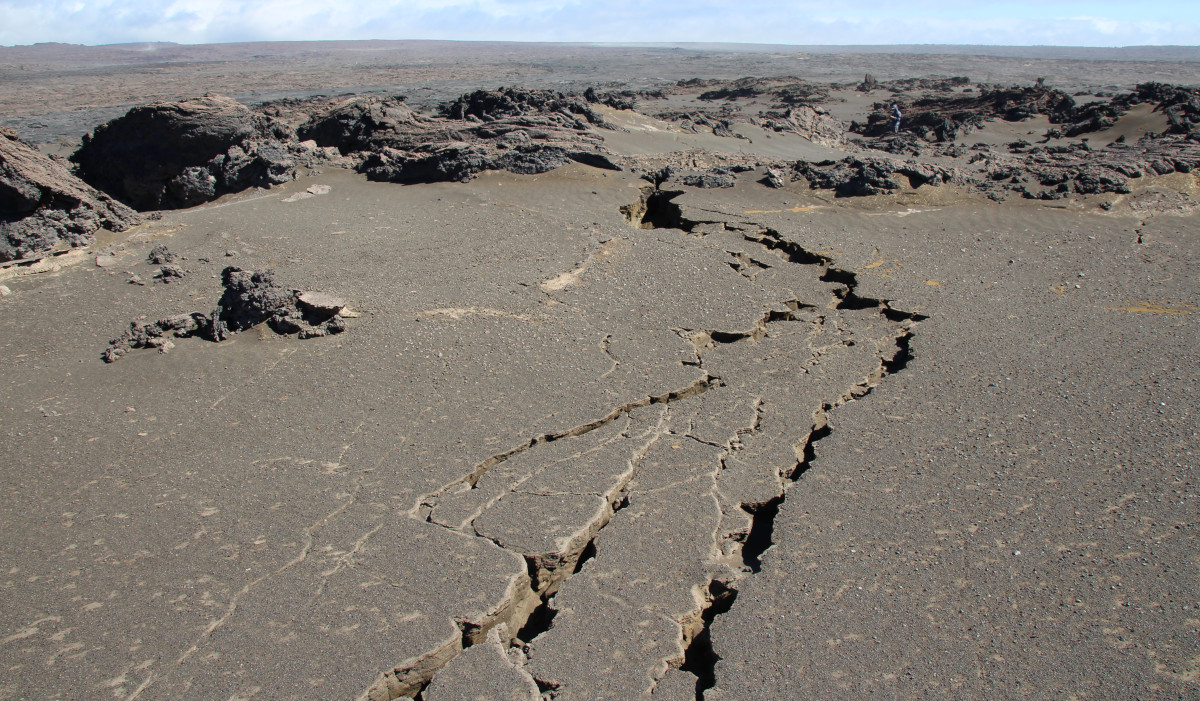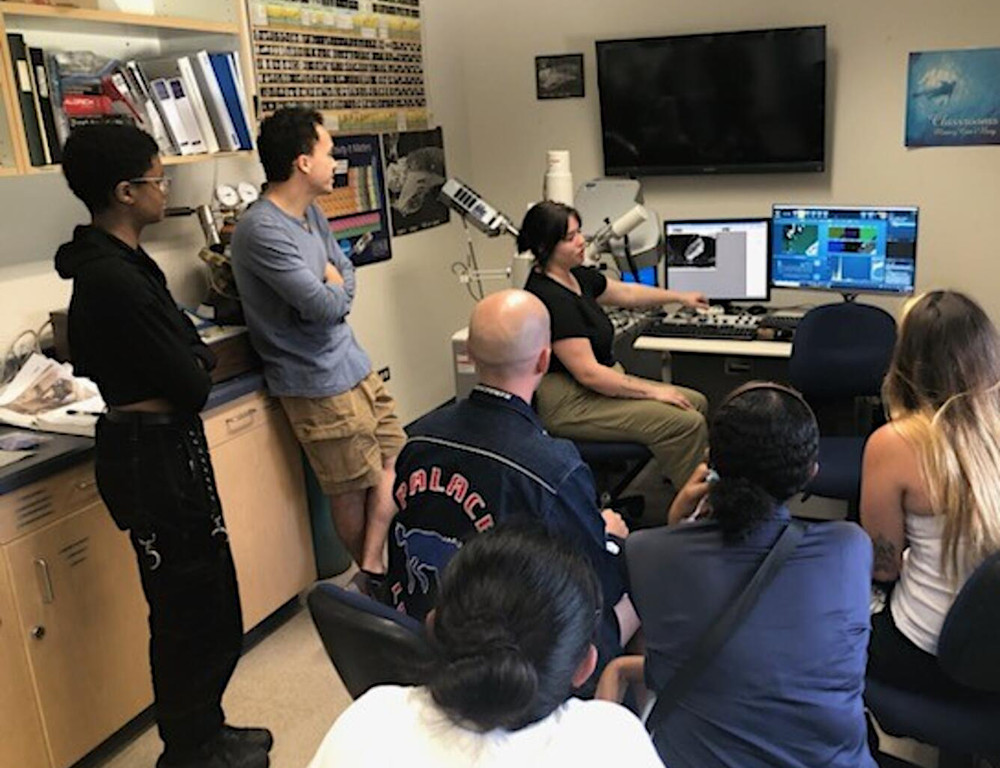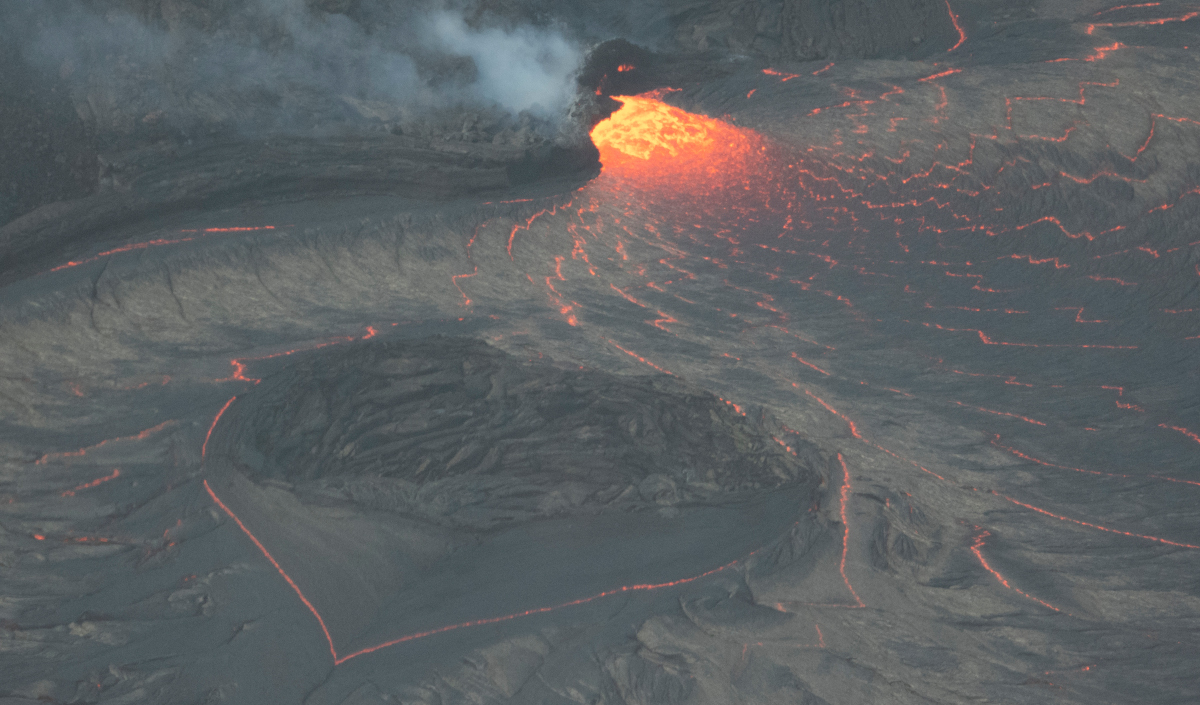(BIVN) – Kīlauea is not erupting, and the volcano’s Alert level remains at ADVISORY.
Scientists say “disbursed seismicity at Kīlauea’s summit and along the Koaʻe fault system southwest of the caldera continues” following a recent intrusion of magma into the area. The USGS reports that the average earthquake counts remains below 10 per hour.
From this week’s Volcano Watch article, written by HVO geologist Kendra J. Lynn and shared with media the day after Valentine’s Day:
The USGS Hawaiian Volcano Observatory (HVO) “lavas” working with our partners at the University of Hawai‘i at Hilo (UHH), and for Valentine’s Day we wanted to highlight some of the things we appreciate about this relationship.
Faculty and students in the UHH Geology and Anthropology Departments contribute to both volcano monitoring and research in Hawai‘i. Recently, seismic unrest southwest of Kīlauea’s summit alerted HVO to a new intrusion of magma that occurred over a three-day period. The intrusion resulted in slight changes in ground elevations and new surface cracks along the Maunaiki trail in the Ka‘ū Desert of Hawai‘i Volcanoes National Park.

USGS: “On February 3, 2024, a team of HVO scientists documented new ground cracks in three areas of the Maunaiki Trail in the Ka‘ū Desert, caused by the intrusion at Kīlauea south of the summit caldera. These cracks primarily cut the loose Keanakāko‘i tephra which blanketed the region in 1790 CE. Some cracks were over 100 feet (30 meters) long. Note the person for scale in the right upper portion of the photo.” (USGS photo by N. Deligne)
UHH geology and anthropology faculty and students conducted GPS and leveling surveys over the past two weekends, tracking changes in the pre-existing cracks along the Koa‘e fault system south of Kīlauea’s summit. The major cracks in this area (not to be confused with the new cracks) have been monitored since 1966 using much of the same equipment that we still employ today: a tape measure, a ruler 9.8 feet (leveling rod three meters) tall, and a telescopic sighting scope.
The data collected by the group shows that the faults along the Koa‘e were squeezed together by several inches (centimeters) and the ground was raised by more than a foot (30+ centimeters) in some areas from the intrusion. The surveying adds specific information to help “ground truth” other monitoring datasets in the area, such as satellite, GPS, and tilt.

USGS: “HVO geologist Baylee McDade shows students from the UHH petrology class how to use the scanning electron microscope (SEM) to analyze minerals. Research in the SEM lab helps HVO and UHH to better understand how and why volcanoes in Hawai‘i erupt.” (USGS photo by Lis Gallant, public domain)
HVO staff are also committed to giving back to the UHH community through education, outreach, and hands on student research and field opportunities. This week, HVO geologists participated in the UHH Geology department’s petrology laboratory course to expose students to analytical techniques. Petrology is the study of what rocks are made of.
During their regularly scheduled class period, HVO staff met with UHH students in the scanning electron microscope (SEM) laboratory housed in the Marine Science building. For their lab assignment this week, student groups in the SEM lab learned techniques for doing petrological monitoring and research on Hawaii’s active volcanoes.
Students were shown how the SEM operates and how it can help scientists better understand the compositions of rocks and minerals from Hawaiian eruptions. Using a sample from Mauna Loa’s 1855-1856 eruption, we demonstrated how energy dispersive spectrometry (EDS) analysis can identify different types of minerals (olivine, plagioclase, pyroxene) based on the major elements in their chemical structure.
Students were also introduced to some new instrumentation on the SEM called a wavelength dispersive spectrometer (WDS). This new equipment, funded by the Additional Supplemental Appropriations for Disaster Relief Act of 2019 (H.R. 2157), allows us to conduct standardized measurements on samples that are quantitative and comparable to other analytical technologies. This type of functionality was not available on the Island of Hawai‘i prior to 2019.
In addition to education and outreach, HVO staff are committed to providing student opportunities for professional development and research. Through a cooperative agreement with the Research Corporation of the University of Hawai‘i, an undergraduate student works with HVO scientists in the lab, specifically focused on processing samples during eruptions for near-real-time geochemical monitoring. In the fall of 2023, three additional students were involved in laboratory projects supporting ongoing research on Kīlauea’s recent eruptions.
HVO has also hosted Pacific Internship Programs for Exploring Science (PIPES) students in the past, and, in the future, we hope to involve PIPES interns in laboratory-based research on Kīlauea’s recent eruptions. Through these various activities HVO strives to support UHH students (and faculty), and this Valentine’s Day we wish to express our gratitude for all of their hard work.


by Big Island Video News5:47 pm
on at
STORY SUMMARY
ISLAND OF HAWAIʻI - The USGS Hawaiian Volcano Observatory wrote that it “lavas” working with partners at the University of Hawai‘i at Hilo.